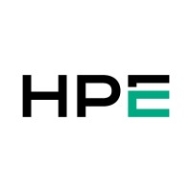

Zerto and AWS Application Migration Service compete in the disaster recovery and migration category. Based on user feedback, Zerto appears to have the edge with its more comprehensive feature set and near-zero RPO capabilities.
Features: Zerto offers real-time replication, seamless integration with VMware and vCenter Server, and a user-friendly interface that requires minimal daily interaction. It provides hardware independence and supports migrations across different sites with nearly zero RPO. AWS Application Migration Service allows migrations with minimal downtime, is free to use, and costs are tied to AWS resources used. It supports a wide range of workloads, ensuring efficiency and reliability during migrations.
Room for Improvement: Zerto needs enhancements in backup capabilities, more detailed reporting, and licensing flexibility. Users are also asking for better automation tools and advanced encryption. AWS Application Migration Service would benefit from improved logging, more transparent reporting, and clearer cost structures to enhance user satisfaction and financial predictability.
Ease of Deployment and Customer Service: Zerto deploys easily across on-premises, private, and hybrid clouds, with excellent customer service and responsive support. AWS Application Migration Service offers straightforward hybrid cloud deployment and a customer support experience that ensures seamless service execution.
Pricing and ROI: Zerto’s per-VM pricing model is considered expensive but is justified by its robust features and ROI through time and downtime savings. AWS Application Migration Service's model ties costs to AWS resource usage, offering a cost-effective solution for businesses needing scalable migration capabilities without upfront costs.
| Product | Market Share (%) |
|---|---|
| HPE Zerto Software | 6.5% |
| AWS Application Migration Service | 5.2% |
| Other | 88.3% |


| Company Size | Count |
|---|---|
| Small Business | 1 |
| Midsize Enterprise | 2 |
| Large Enterprise | 4 |
| Company Size | Count |
|---|---|
| Small Business | 92 |
| Midsize Enterprise | 86 |
| Large Enterprise | 193 |
AWS Application Migration Service minimizes time-intensive, error-prone manual processes by automating the conversion of your source servers to run natively on AWS. It also simplifies application modernization with built-in and custom optimization options.
Zerto is used for disaster recovery, business continuity, data migration, and ransomware recovery, providing continuous data protection and near real-time replication. Valued for ease of use, efficient failover processes, and versatile integration, it enhances organizational efficiency, reduces errors, and boosts productivity.
We monitor all Cloud Migration reviews to prevent fraudulent reviews and keep review quality high. We do not post reviews by company employees or direct competitors. We validate each review for authenticity via cross-reference with LinkedIn, and personal follow-up with the reviewer when necessary.